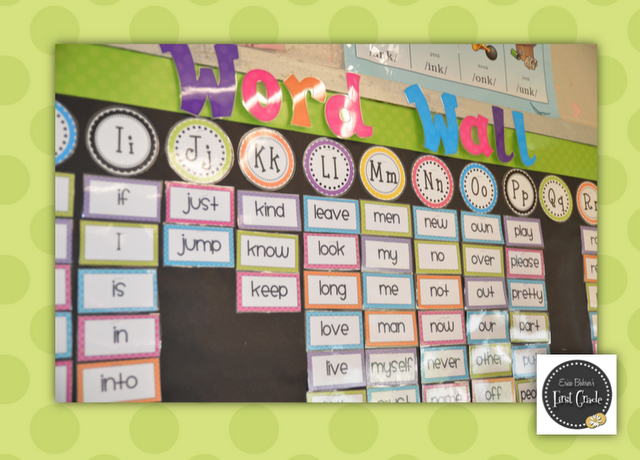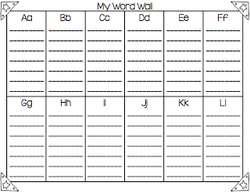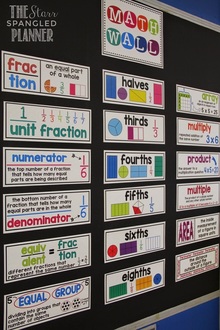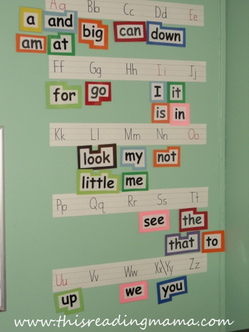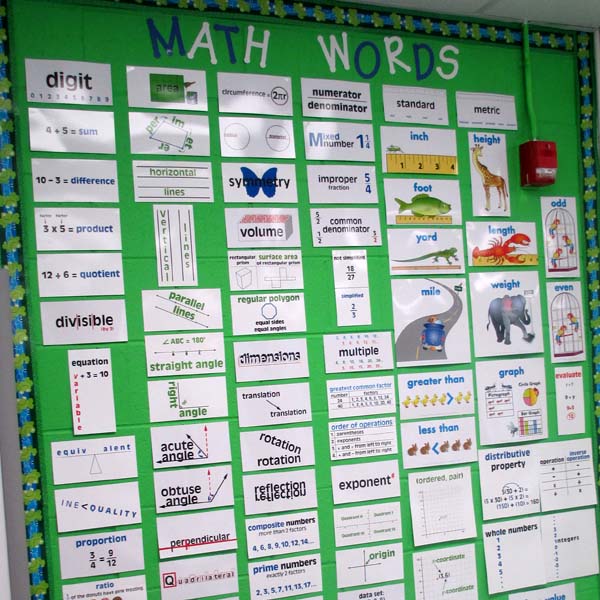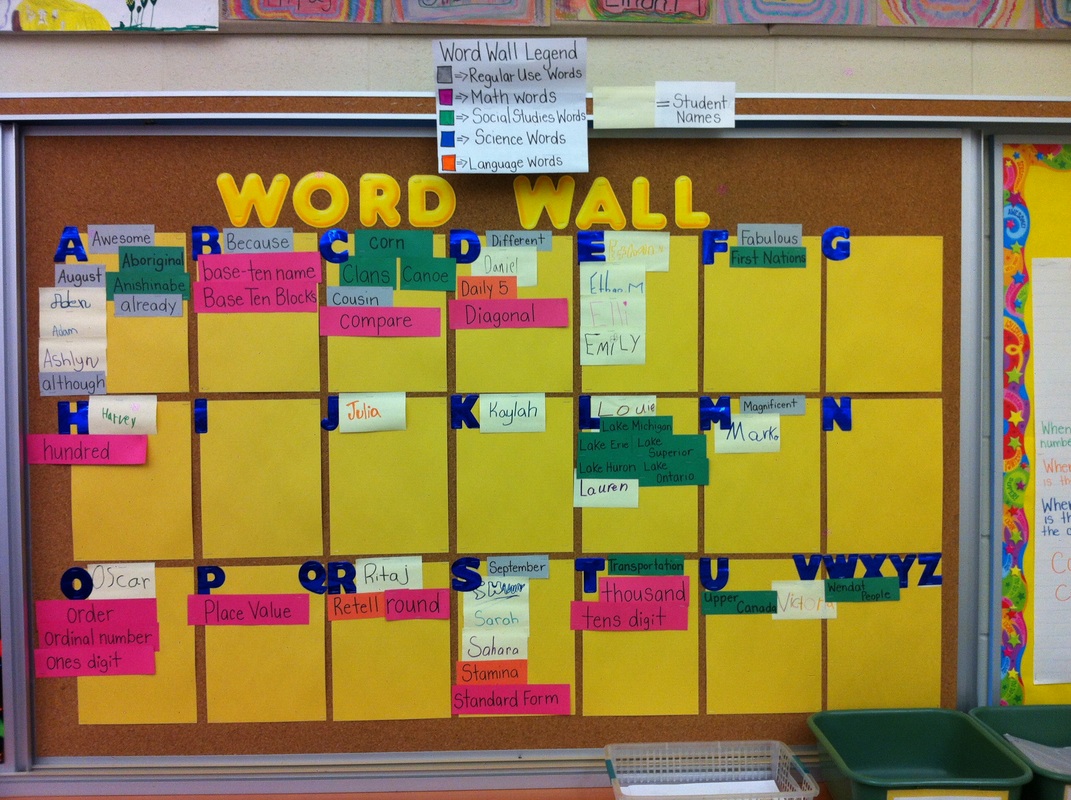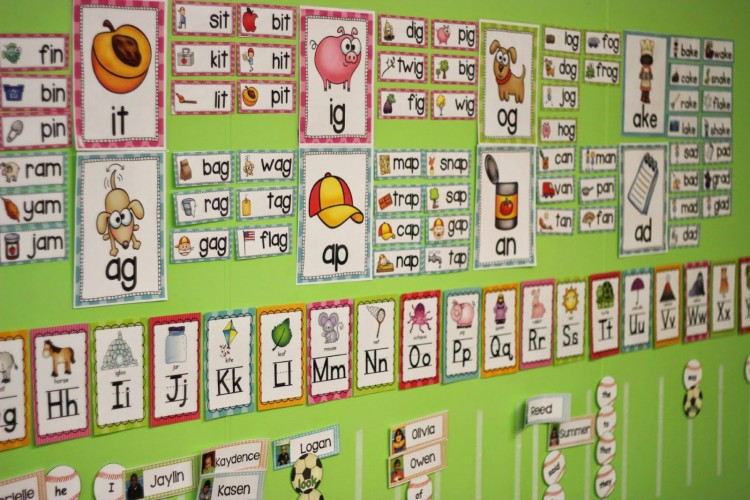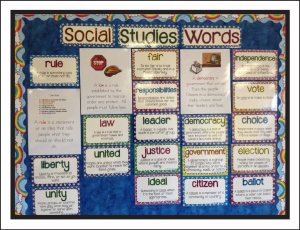|
How to use word walls (Reading Rockets, n.d, paragraph 2)
Copying words from word walls may be difficult for some ELL students. Teachers can supply these students with the words written on a separate sheet of paper - Tape the word wall paper to their desk or writing folder for easy reference (See example to the right). |
What is a Word Wall?
A word wall is a collection of words which are displayed in large visible letters on a wall, bulletin board, or other display surface in the classroom. Word walls can be a great learning tool for children because they provide a rich resource of vocabulary for students of all ages (Wright, 2010). The main purpose of a word wall is to use it as a scaffold to help students develop their sight word and word identification knowledge. "Word walls support student’s ongoing study of how words work and should be interactive, not simply a display of words. Word walls encourage students to actively learn about words and therefore should be referenced and used often during reading and writing" (Interactive Word Walls, 2010, paragraph 3). As words are added, students and teachers should discuss their meaning. Students should also be encouraged to share what they notice about the features of the word including how the word looks, sounds, what it means, and how it is connected to other words. Why use word walls?
Types of Word Walls:
|
Pictured above (left), is an example of a content-area word wall. The purpose of a mathematics word wall is to identify words and phrases that students need to understand and use to make progress in mathematics. Mathematical language is crucial to children's development of thinking. If students do not have the vocabulary to talk about math concepts and skills, they cannot make progress in understanding these areas of mathematical knowledge. Students also need to be familiar with mathematical vocabulary and mathematical terms to understand written and spoken instructions.
|
As you can see, a word wall is an ongoing, organized display of key words that provides visual reference for students throughout a unit of study. In this video, the teacher is conducting a vocabulary lesson on a Greek prefix using a word wall. This helps students see the relationships between words and ideas, which enhances academic achievement.
|
In this video, the teacher encourages students to stop and think about words in order to support vocabulary development. These words are also used continually by teachers and students during a variety of activities in order to help students make connections to different concepts - such as spelling and writing.
|
|
Number Sense, Concepts, and Operations Word Wall
"The purpose of the mathematics word wall is to identify words and phrases that students need to understand and use so as to make good progress in mathematics. Mathematical language is crucial to children's development of thinking. If students do not have the vocabulary to talk about math concepts and skills, they cannot make progress in understanding these areas of mathematical knowledge. They need to be familiar with mathematical vocabulary and mathematical terms to understand written and spoken instructions" (Reading Rockets, n.d, paragraph 8). Using interactive word walls in science "Students remove words from the wall and make connecting statements about the words. The class can then create a summarizing statement, for example: cells make up tissues, and tissues make up organs" (Reading Rockets, n.d paragraph 10) Word Family Word Wall: Word families help readers look for patterns when decoding. When students begin to recognize these patterns, they can sound out words that they do not readily know, which in turn can build their confidence during the difficult early reading stages. Vocabulary Word Wall: Allows students to comprehend new vocabulary encountered in reading materials. After reading a story to the entire class, teachers can create a word wall using the vocabulary included in the text. Social studies word walls are consistently changing based on the content being taught and the needs of the students. As an activity, teachers can ask students to search for key words in an assigned reading to collect examples of important vocabulary terms. These words can then be recorded on the word wall for later reference. |
References:
Interactive Word Walls. (2010, November 1). Retrieved October 8, 2015, from http://www.springisd.org/docs2/ci/special/Word Walls 2010.pdf
Intro and Word Walls. (2014, April 29). Retrieved October 7, 2015, from https://www.youtube.com/watch?v=5uh0HWdHgaY
Reading Rockets - Word Walls. (n.d.). Retrieved October 7, 2015, from http://www.readingrockets.org/strategies/word_walls
Teaching Vocabulary using Word Wall. (2011, April 11). Retrieved October 7, 2015, from https://www.youtube.com/watch?v=0tEjDdFoB2k
Ten Great Word Wall Strategies for Classrooms. (2008, August 29). Retrieved October 7, 2015, from http://www.k12reader.com/10-great-word-wall-strategies-for-classrooms/
Wagstaff, J. (n.d.). Word Walls That Work | Scholastic.com. Retrieved October 7, 2015, from http://www.scholastic.com/teachers/article/word-walls-work
Wright, W. E. (2010). Foundations for teaching English language learners: Research, theory, policy, and practice. Philadelphia: Caslon Pub.
Interactive Word Walls. (2010, November 1). Retrieved October 8, 2015, from http://www.springisd.org/docs2/ci/special/Word Walls 2010.pdf
Intro and Word Walls. (2014, April 29). Retrieved October 7, 2015, from https://www.youtube.com/watch?v=5uh0HWdHgaY
Reading Rockets - Word Walls. (n.d.). Retrieved October 7, 2015, from http://www.readingrockets.org/strategies/word_walls
Teaching Vocabulary using Word Wall. (2011, April 11). Retrieved October 7, 2015, from https://www.youtube.com/watch?v=0tEjDdFoB2k
Ten Great Word Wall Strategies for Classrooms. (2008, August 29). Retrieved October 7, 2015, from http://www.k12reader.com/10-great-word-wall-strategies-for-classrooms/
Wagstaff, J. (n.d.). Word Walls That Work | Scholastic.com. Retrieved October 7, 2015, from http://www.scholastic.com/teachers/article/word-walls-work
Wright, W. E. (2010). Foundations for teaching English language learners: Research, theory, policy, and practice. Philadelphia: Caslon Pub.
